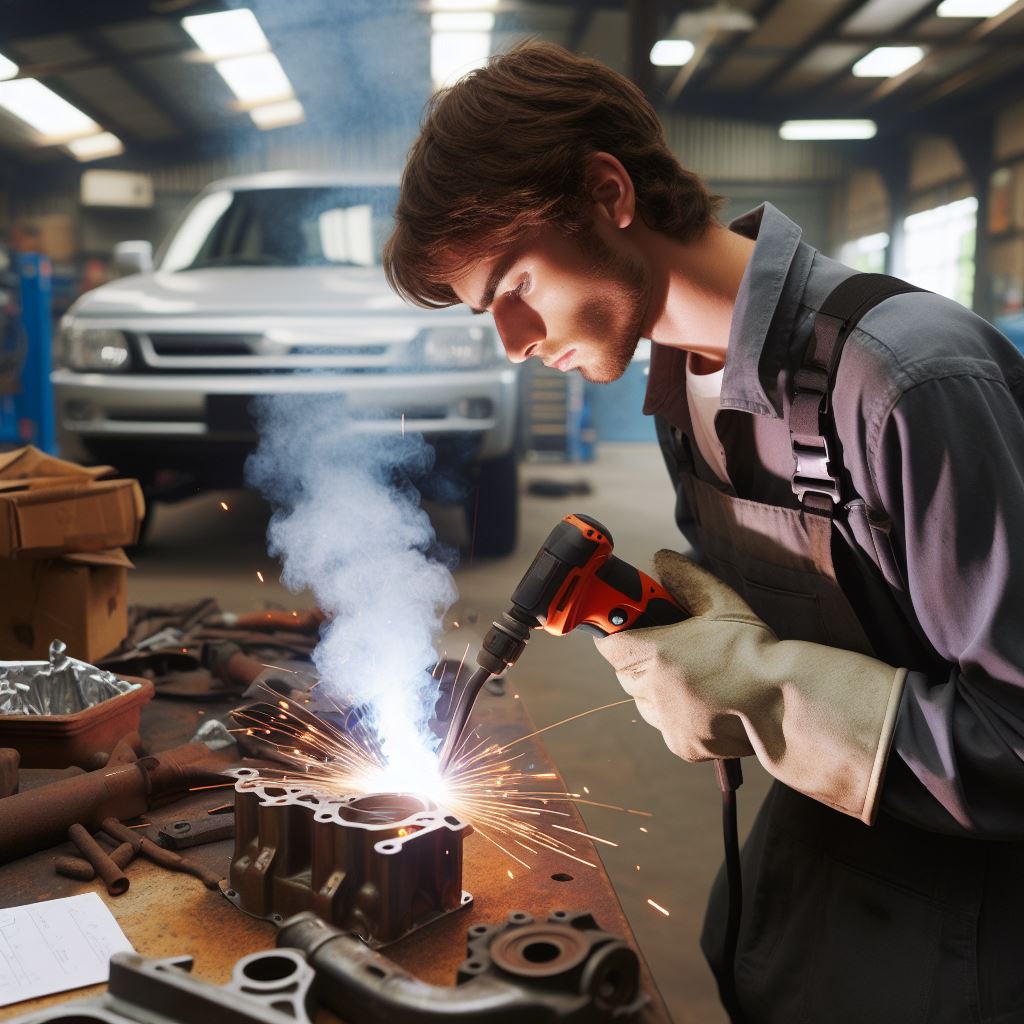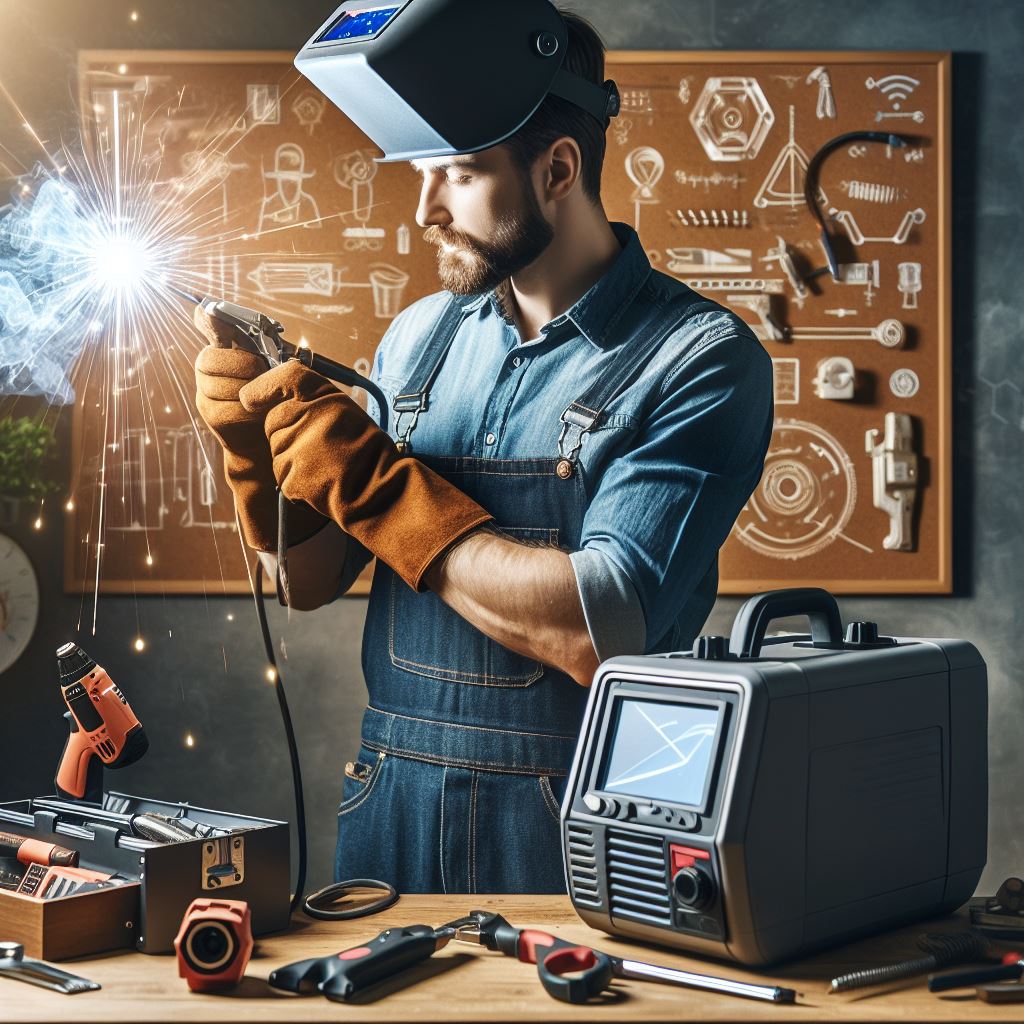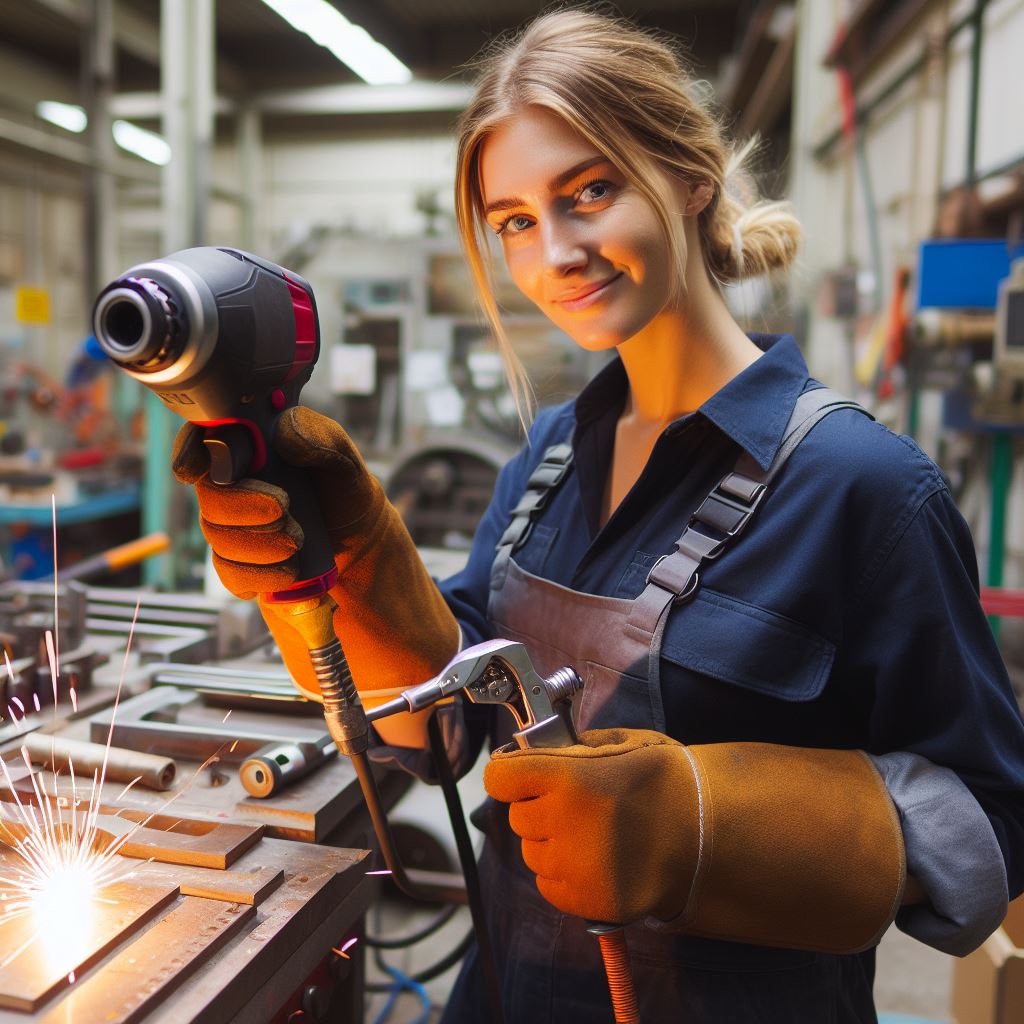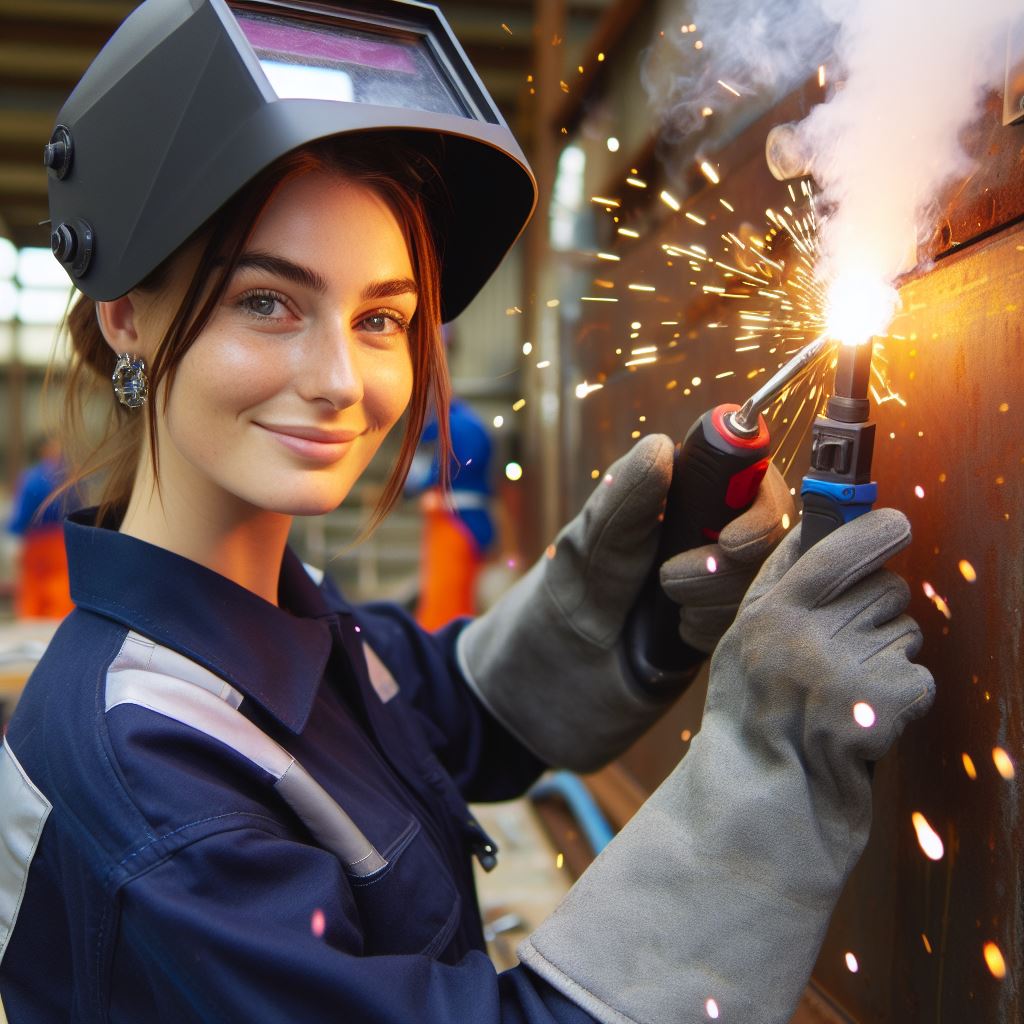Introduction
Diving into Opportunities: The Prospects of Underwater Welding in Australia
Australia’s extensive coastline is not just a breathtaking natural wonder but also a realm of opportunities for those skilled in underwater welding.
This dynamic field combines welding expertise with the challenges of working in aquatic environments, offering a niche yet vital set of skills.
The introduction of underwater welding in Australia aligns with the nation’s growing maritime and offshore industries.
With numerous offshore structures, including oil rigs, bridges, and pipelines, the demand for underwater welding professionals is on the rise.
As we delve into the possibilities, this chapter will unravel the unique facets of underwater welding, shedding light on the current state of the industry, the skills required, and the potential for career growth.
Join us in exploring the depths of Australia’s underwater welding opportunities.
underwater welding
Underwater welding is a fascinating and challenging profession that involves joining metal structures underwater. It is a specialized form of welding that requires expert skills and equipment.
In Australia, subsea welding holds great importance due to the country’s vast coastline and thriving marine industries. The nation heavily relies on offshore oil and gas exploration, commercial diving, and offshore construction.
Importance of underwater welding in Australia
One of the key reasons why subsea welding is crucial in Australia is the maintenance and repair of offshore structures. These structures, like oil rigs and underwater pipelines, are vital for the extraction and transportation of oil and gas.
Underwater welders are responsible for ensuring the integrity of these structures by welding and repairing any damages caused by corrosion or accidents.
Moreover, Australia’s marine industries, such as shipbuilding, port construction, and coastal infrastructure development, also heavily rely on subsea welding. It is essential for constructing and repairing various maritime structures, ensuring safe and efficient operations.
The demand for underwater welders in Australia continues to grow, offering significant opportunities for skilled professionals.
As the nation expands its offshore activities and marine industries, the need for subsea welding expertise becomes even more critical.
In general, subsea welding is a specialized profession that holds great importance in Australia.
From maintaining offshore structures to supporting marine industries, it plays a vital role in ensuring the safety and functionality of various underwater installations.
The growing opportunities in this field make it an attractive career choice for those with a passion for both welding and the underwater world.
Overview of Underwater Welding in Australia
History and development of underwater welding
- Underwater welding, also known as hyperbaric welding, has a rich history and significant development over the years.
- It dates back to the early 1930s when the first successful underwater wet welding experiments were conducted.
- Since then, subsea welding techniques have improved with advancements in equipment and training programs.
Current status and growth of the industry
- In Australia, the subsea welding industry has experienced significant growth in recent years.
- This can be attributed to the expansion of maritime and offshore industries, resulting in a higher demand for skilled underwater welders.
- The industry is constantly evolving, adapting to new technologies and techniques to meet the growing demand.
Importance of underwater welding in maritime and offshore industries
- Underwater welding plays a vital role in the maritime and offshore industries in Australia.
- It enables repairs and maintenance on submerged structures such as oil rigs, pipelines, ship hulls, and harbor facilities.
- Without the expertise of underwater welders, sustaining these structures would be challenging, leading to potential hazards and financial losses.
The importance of subsea welding goes beyond maintenance and repair. It also contributes to the construction of new structures.
Underwater welders are involved in the installation of underwater pipelines, offshore wind farms, and other submerged projects.
Their skills are essential to ensure the structural integrity and longevity of these maritime and offshore installations.
Ultimately, the growth of the subsea welding industry in Australia offers numerous opportunities.
Skilled and certified underwater welders are in high demand, with competitive salaries and the potential for career advancement.
Furthermore, as technology continues to advance, there is a constant need for innovation in subsea welding techniques and equipment.
To meet the demand for skilled underwater welders, training programs and certifications have been established.
These programs not only provide the necessary skills but also prioritize safety procedures and guidelines.
Safety is a crucial aspect of subsea welding due to the unique challenges posed by working in underwater environments.
Generally, subsea welding in Australia has a rich history and has witnessed significant growth in recent years.
The industry plays a crucial role in the maritime and offshore sectors, ensuring the maintenance and construction of submerged structures.
This offers excellent opportunities for individuals seeking a rewarding and challenging career in a specialized field.
With the right training and expertise, underwater welding can be a promising profession in Australia’s thriving maritime and offshore industries.
Opportunities in underwater welding in Australia
A career in underwater welding in Australia presents numerous opportunities for skilled individuals. The increased demand for underwater welders, various sectors employing them, and the advantages of pursuing this career path make it an attractive option.
Increased demand for skilled underwater welders
There is a growing demand for skilled underwater welders in Australia due to the expanding marine industry. As a result, job opportunities in this field are on the rise.
Various sectors employing underwater welders
Underwater welders are employed across different sectors in Australia, providing a wide range of opportunities for those interested in this profession.
Your Personalized Career Strategy
Unlock your potential with tailored career consulting. Get clear, actionable steps designed for your success. Start now!
Get Started- Offshore oil and gas industry: This sector heavily relies on underwater welders to maintain and repair offshore structures and pipelines.
- Shipbuilding and repair industry: Underwater welders play a crucial role in constructing, maintaining, and repairing ships and other marine vessels.
- Infrastructure development projects: With the country’s focus on infrastructure development, underwater welders are needed for various construction projects, such as bridges and underwater tunnels.
Advantages of pursuing a career in underwater welding
Choosing a career in subsea welding comes with several advantages, making it a rewarding and fulfilling profession.
- Lucrative opportunities: Skilled underwater welders in Australia can enjoy excellent earning potential due to the high demand and specialized nature of their work.
- Professional growth: As underwater welders gain experience and expertise, they can advance their careers by taking on more challenging projects and assuming leadership roles.
- Work-life balance: Underwater welders often work on a rotational basis, allowing them to enjoy extended time off between work assignments and maintain a healthy work-life balance.
- Exciting and unique work environment: Working underwater presents a distinct experience, allowing underwater welders to explore marine environments and encounter various marine life.
- Contributing to essential industries: Underwater welders play a vital role in maintaining and constructing critical infrastructure, ensuring the smooth operation of industries such as oil and gas, shipbuilding, and infrastructure development.
Essence, pursuing a career in subsea welding in Australia offers numerous opportunities.
The increased demand for skilled professionals, diverse employment sectors, and the tangible advantages make it an appealing choice for those seeking a rewarding and fulfilling career path.
Requirements and qualifications for underwater welders in Australia
Certifications and licenses needed
Underwater welders in Australia must possess certifications and licenses to ensure their competence and safety.
These certifications include the Australian Diver Accreditation Scheme (ADAS) certification for commercial diving operations.
Technical skills and experience required
To become an underwater welder in Australia, individuals must possess a range of technical skills and practical experience.
This includes proficiency in welding techniques, knowledge of different welding materials, and understanding of subsea welding procedures.
Physical and mental demands of the profession
Underwater welding is a physically and mentally demanding profession that requires individuals to be in peak condition.
Divers must have excellent swimming abilities, endurance, and strength to withstand the water pressure and perform precise welding tasks.
List of requirements and qualifications for underwater welders in Australia:
Certifications and licenses
- Australian Diver Accreditation Scheme (ADAS) certification for commercial diving operations.
- Welding certifications such as the Welding Certificate or Welding Diploma.
Technical skills and experience
- Proficiency in various welding techniques, including shielded metal arc welding (SMAW) and gas tungsten arc welding (GTAW).
- Knowledge of different welding materials like steel, stainless steel, and aluminum.
- Familiarity with subsea welding procedures and safety protocols
Physical and mental abilities
- Strong swimming skills and comfort in water.
- Excellent physical fitness and stamina to withstand the physical demands of the profession.
- Good hand-eye coordination and precise motor skills for accurate welding tasks.
- Mental resilience and ability to cope with challenging underwater conditions and potential risks.
Underwater welding is a specialized field that requires individuals to meet specific requirements and qualifications.
Certifications and licenses ensure that welders have received proper training and possess the necessary skills to perform their duties safely and effectively.
Technical skills and experience are crucial for the successful execution of subsea welding projects, as it involves working with diverse materials and complex welding procedures.
Additionally, the physical and mental demands of the profession highlight the need for individuals to be in excellent physical condition and mentally resilient to handle the challenges of working underwater.
Essentially, becoming an underwater welder in Australia requires individuals to obtain certifications, demonstrate technical skills, and meet the physical and mental demands of the profession.
By meeting these requirements and qualifications, aspiring underwater welders can pave their way towards a rewarding and challenging career in the field.
Read: Top Plumbing Trends in Australian Engineering
Training and education options for aspiring underwater welders
Vocational training programs
- Vocational training programs are a popular choice for individuals interested in pursuing a career in subsea welding.
- These programs offer a comprehensive curriculum that includes both theoretical knowledge and practical skills.
- Students learn about the different welding techniques used in underwater environments, as well as safety procedures and equipment handling.
- Vocational training programs typically have experienced instructors who provide hands-on training and guidance throughout the course.
- Upon completion, graduates are equipped with the necessary skills to start their careers as underwater welders.
Specialized courses and certifications
- In addition to vocational training programs, there are specialized courses and certifications available for aspiring underwater welders.
- These courses focus on specific areas of subsea welding, such as deep-sea welding or offshore welding.
- By taking these specialized courses, welders can enhance their skills and expertise in a particular field.
- Certifications from reputable institutions add credibility to an individual’s qualifications and can improve job prospects.
- It is important for aspiring underwater welders to research and choose courses and certifications that align with their career goals.
Apprenticeship opportunities
- Apprenticeship programs provide aspiring underwater welders with invaluable hands-on training and real-life work experience.
- These programs typically involve working under the guidance of experienced underwater welders.
- Apprentices learn from their mentors and gradually develop their welding skills in actual underwater settings.
- The duration of apprenticeship programs can vary, ranging from a few months to a couple of years.
- Successful completion of an apprenticeship can lead to better job opportunities and a solid foundation for a career in subsea welding.
Basically, aspiring underwater welders in Australia have various training and education options available to them.
Vocational training programs offer a comprehensive curriculum, while specialized courses and certifications allow individuals to enhance their skills in specific areas of subsea welding.
Apprenticeship programs provide hands-on training and valuable work experience.
By taking advantage of these training opportunities, aspiring underwater welders can acquire the necessary skills and qualifications to succeed in this exciting and challenging field.
Read: The Future of Plumbing Tech in Australia
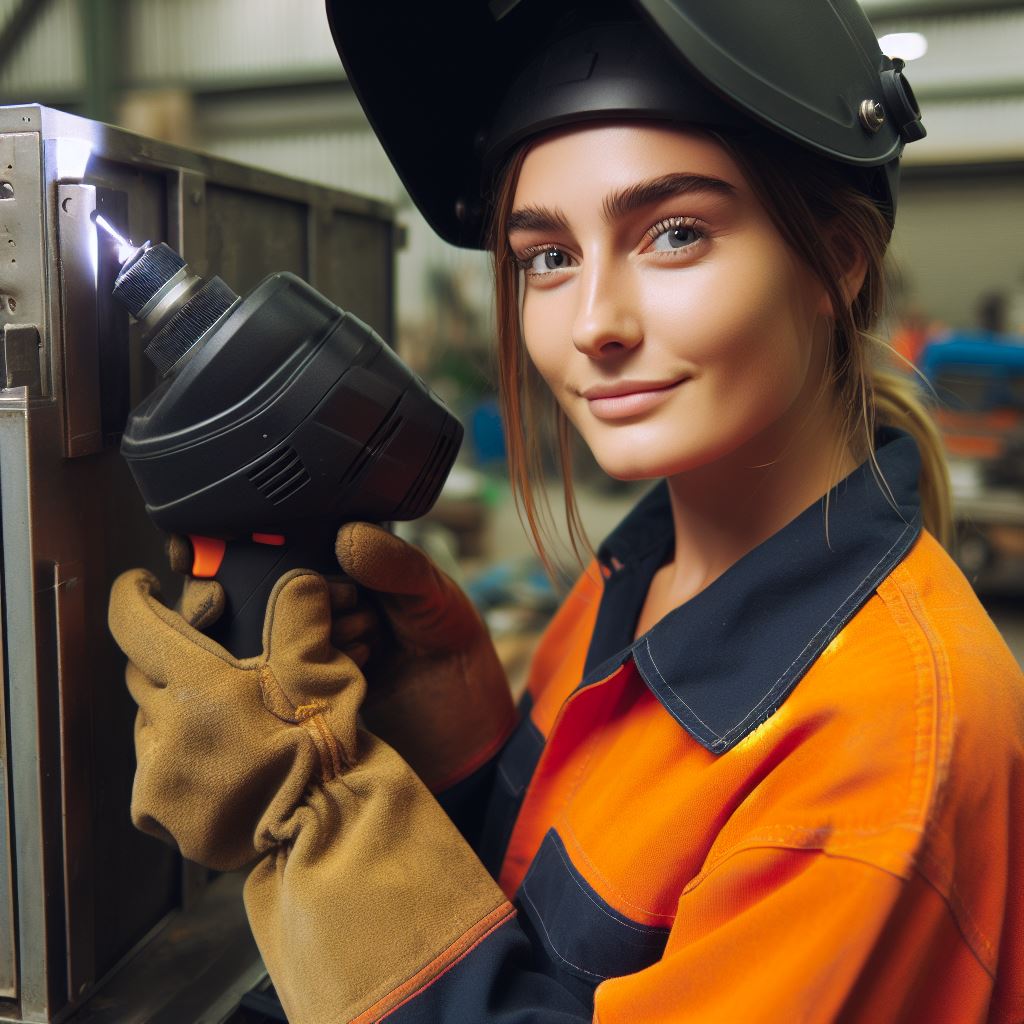
You Might Also Like: Career Path: Becoming a Builder in Australia
You Might Also Like: Rural vs Urban Carpentry in Australia
Challenges and risks associated with underwater welding
Underwater welding in Australia presents various challenges and risks. These include hazardous working conditions, health and safety considerations, and the need for effective strategies to mitigate risks and ensure safety.
Stand Out with a Resume That Gets Results
Your career is worth more than a generic template. Let us craft a resume and cover letter that showcase your unique strengths and help you secure that dream job.
Get HiredHazardous working conditions
- Underwater welding involves working in extreme environments with limited visibility and difficult access.
- Undertaking welding activities at great depths exposes welders to high pressures and potential decompression sickness.
- The presence of marine life, such as sharks or poisonous creatures, increases the risk of physical injury.
- Working in turbulent waters can make it challenging to maintain stability and perform precise welding tasks.
- The risk of electric shock and the potential for explosions due to the presence of flammable materials pose significant dangers.
Health and safety considerations
- Welders may experience musculoskeletal disorders due to prolonged work in awkward positions and heavy equipment handling.
- Inadequate protection from hyperbaric welding hazards can lead to thermal burns and eye injuries.
- Divers are exposed to extreme temperatures and must ensure sufficient insulation and proper cooling systems.
- The high noise levels produced during welding operations can cause hearing damage without the proper use of hearing protection.
- Psychological stress and fatigue can affect divers, impacting their performance and decision-making abilities.
Strategies to mitigate risks and ensure safety
- Employing experienced underwater welders who have undergone specialized training and certification programs.
- Developing comprehensive risk assessment and management plans to identify and address potential hazards.
- Implementing strict safety protocols, such as regular equipment inspections and maintenance to prevent malfunctions.
- Using advanced technologies, such as remotely operated vehicles (ROVs), to minimize human exposure to hazardous environments.
- Providing adequate personal protective equipment (PPE) specifically designed for hyperbaric welding tasks.
- Conducting frequent medical check-ups to monitor the health of underwater welders and identify early signs of illness or injury.
- Educating and raising awareness among welding teams about the potential hazards and best practices for maintaining safety.
- Encouraging open communication within the team to report any safety concerns or incidents promptly.
- Establishing emergency response procedures and training divers in first aid and rescue techniques.
- Maintaining robust communication systems between divers and their support teams on the surface.
Therefore, hyperbaric welding in Australia entails facing hazardous working conditions and health and safety risks.
However, by implementing appropriate strategies and safety measures, these risks can be mitigated, ensuring the well-being of underwater welders and the successful completion of welding projects.
Read: A Day in the Life of an Aussie Plumber
Find Out More: Australian Carpentry: History & Evolution
Salary and career prospects in underwater welding
Average salary range for underwater welders in Australia
- The average salary range for underwater welders in Australia is between $60,000 to $100,000 per year.
- This range can vary depending on factors such as experience, qualifications, and location.
- Experienced underwater welders with advanced certifications and specialized skills can earn higher salaries.
Factors influencing salary variations
- Location plays a significant role in determining salary variations for underwater welders.
- High-demand areas such as offshore oil rigs and major coastal cities tend to offer higher salaries.
- Remote or less accessible locations may have lower salary offerings due to lower demand.
- Experience level and certifications also impact salary potential, with more experienced welders earning higher wages.
- Additional skills such as hyperbaric welding or non-destructive testing can further increase earning potential.
Growth potential and career progression within the industry
- The field of hyperbaric welding offers excellent growth potential and career progression opportunities.
- As underwater construction projects increase, the demand for skilled welders continues to rise.
- With experience and additional certifications, underwater welders can move up to supervisory or management roles.
- Some experienced underwater welders may also choose to start their own hyperbaric welding businesses, offering further career advancement.
- Continuing education and training in new welding techniques and technologies can also lead to higher-paying opportunities.
Ultimately, subsea welding in Australia offers promising salary prospects and potential for career growth.
The average salary range for underwater welders in Australia is between $60,000 to $100,000 per year, with variations based on location, experience, and additional certifications.
With the increasing demand for skilled underwater welders and opportunities for career progression, this field presents a fulfilling and financially rewarding career path.
Read: How to Become a Plumber in Australia
Conclusion
Diving into Success: Unveiling the Wealth of Opportunities in Underwater Welding in Australia
As we wrap up our exploration of underwater welding in Australia, it’s clear that this niche field presents a myriad of opportunities for skilled individuals.
Australia’s vast coastline and thriving maritime and offshore industries demand proficient underwater welders.
The potential for lucrative and fulfilling careers in this specialized domain is undeniable.
In closing, those venturing into underwater welding can find a unique pathway to professional success.
The industry’s growth aligns with Australia’s expanding maritime endeavors, making it an exciting and promising field to explore.
By seizing the opportunities presented in underwater welding, individuals can forge a rewarding and impactful career beneath the waves of Australia’s coastal waters.
So, take the plunge, embrace the challenges, and weld your way to a successful and fulfilling future in this dynamic and specialized field.

